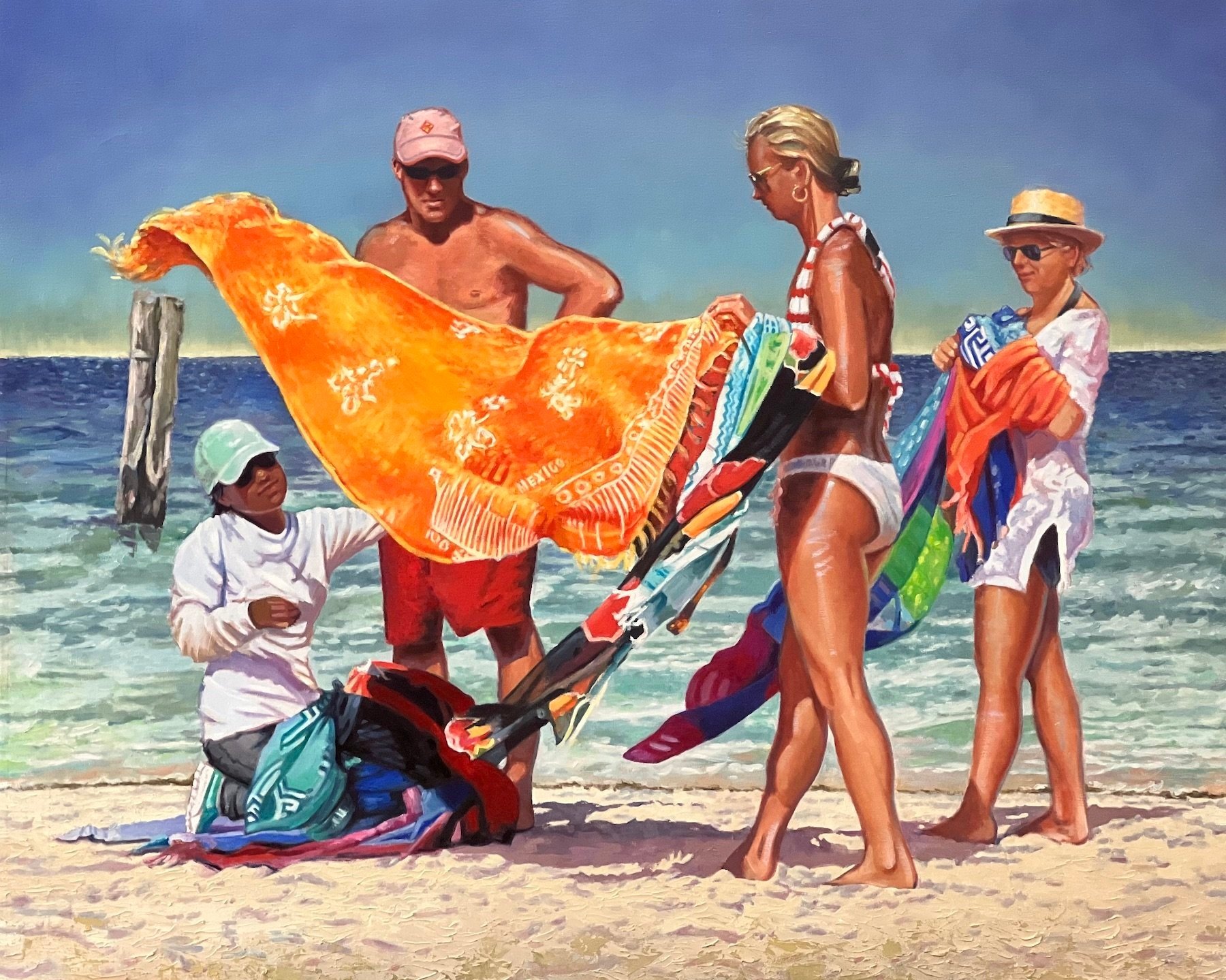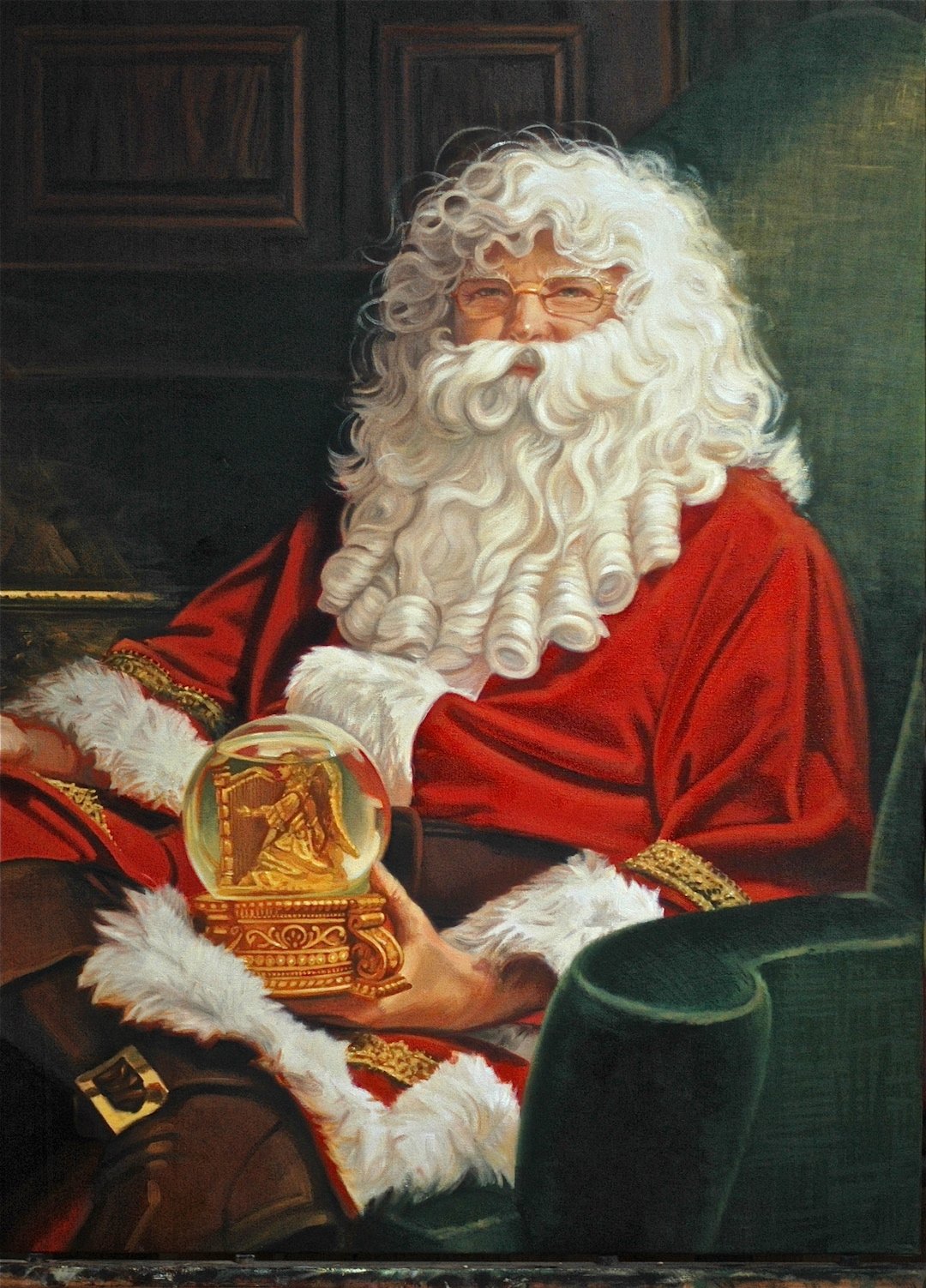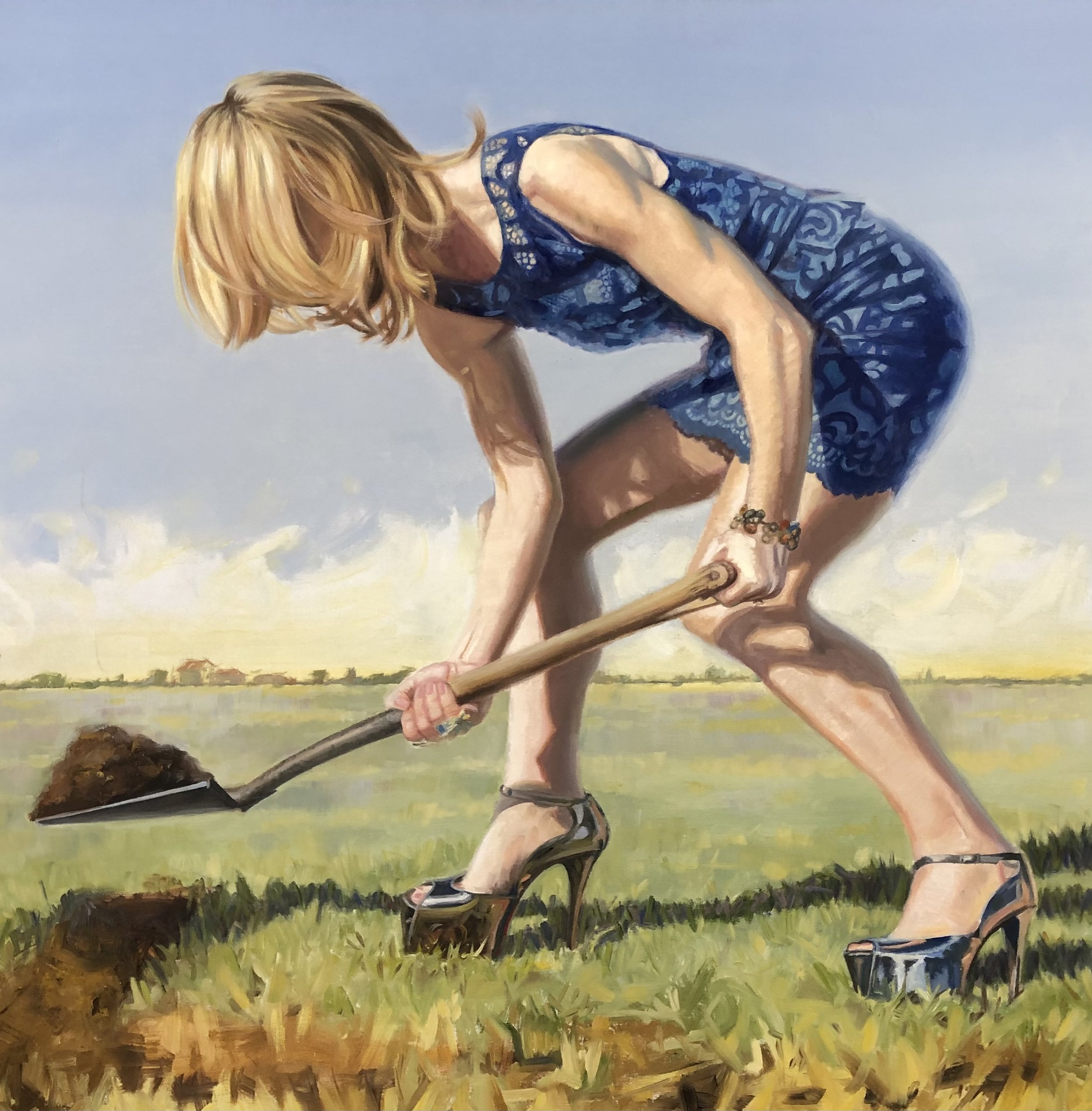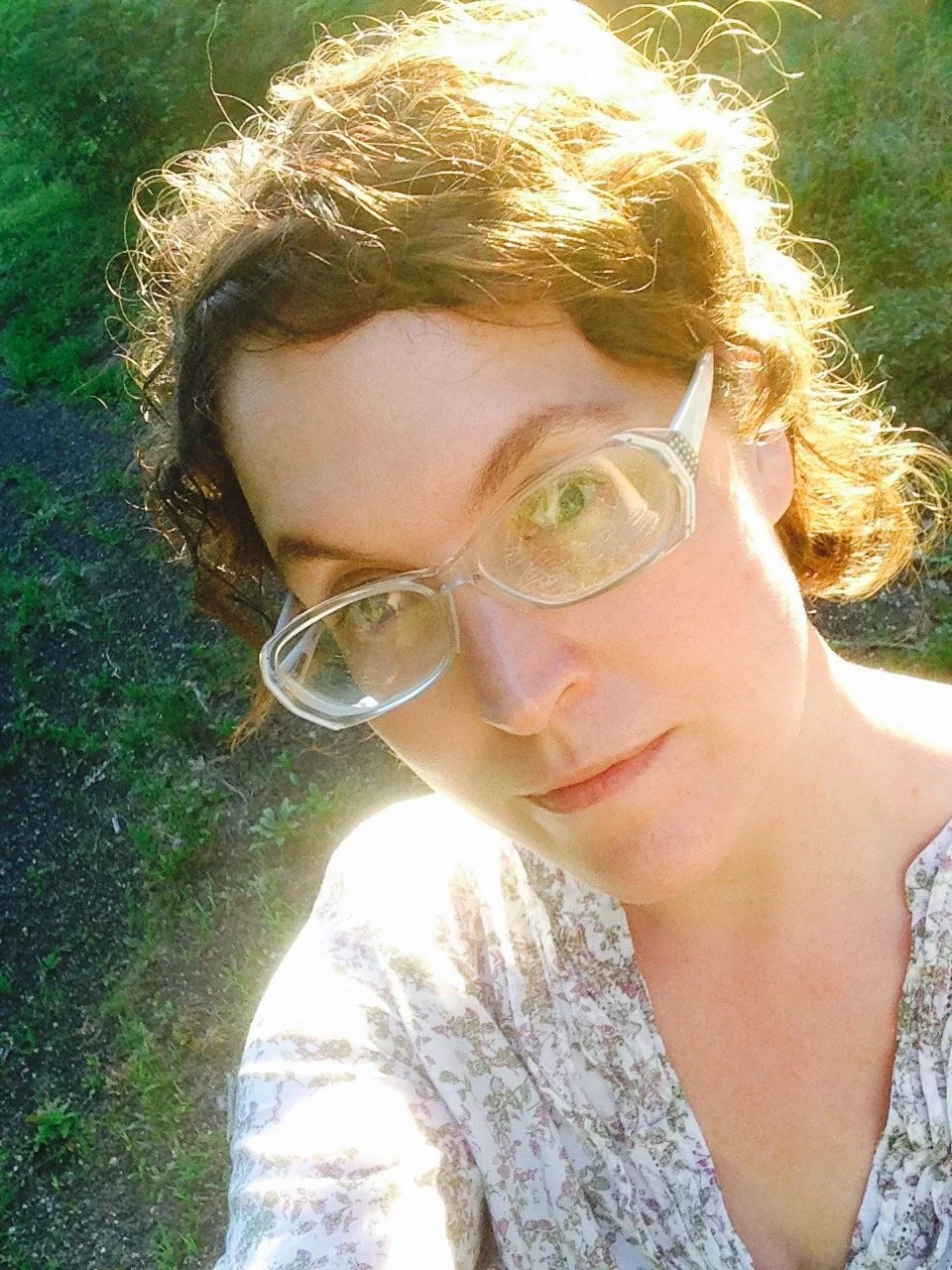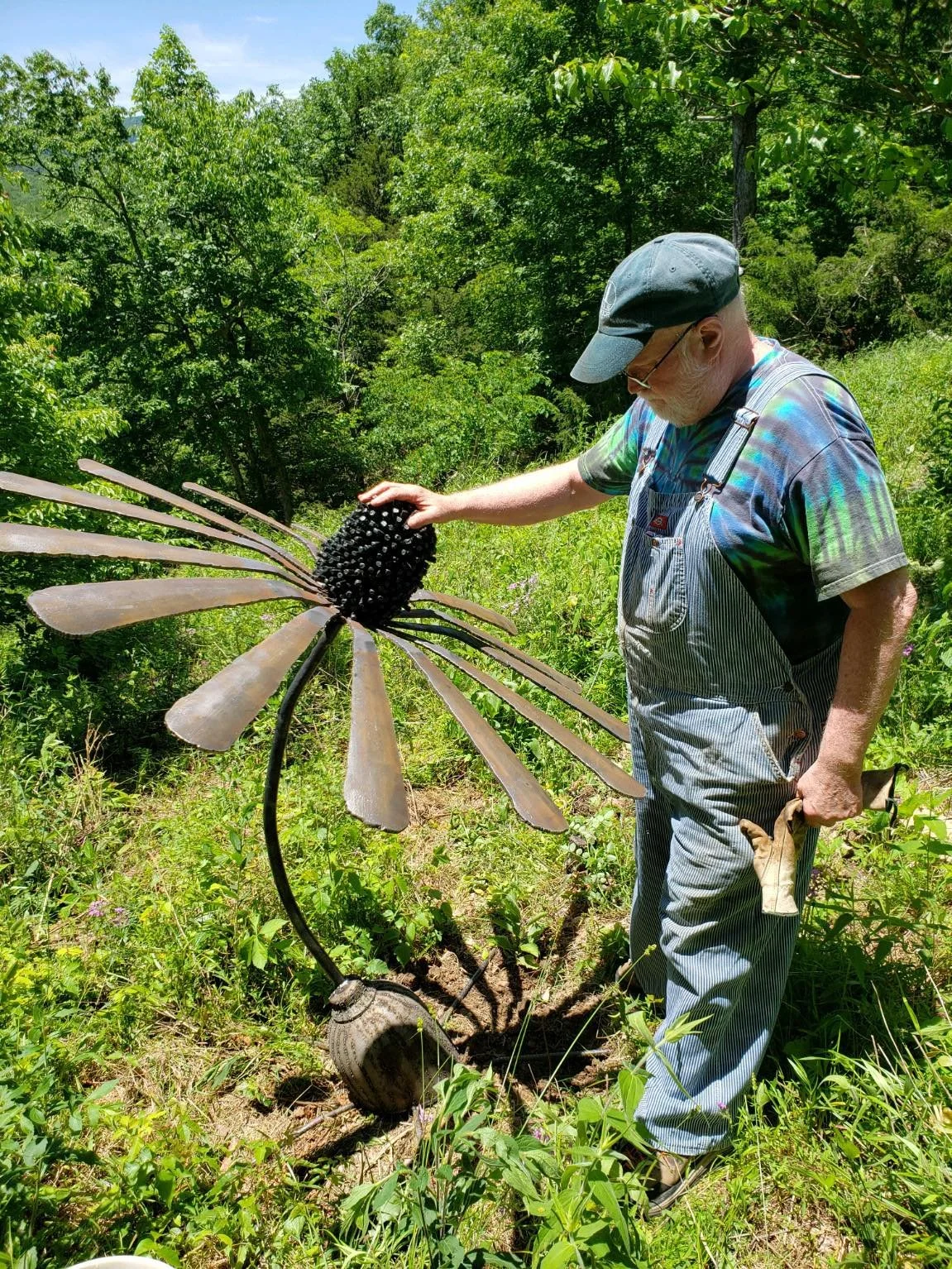Interview with artist Patricia Wilkes
Patricia Wilkes is an Arkansas native living and working in Little Rock. She often finds herself relying on her art training as she works through her compositions. The results are portraits and still lifes in oil and pastel that are fun, charming and wonderfully executed. More of Patricia’s work can be found at Art Group Gallery in Little Rock and at her website patriciawilkesfineart.com.
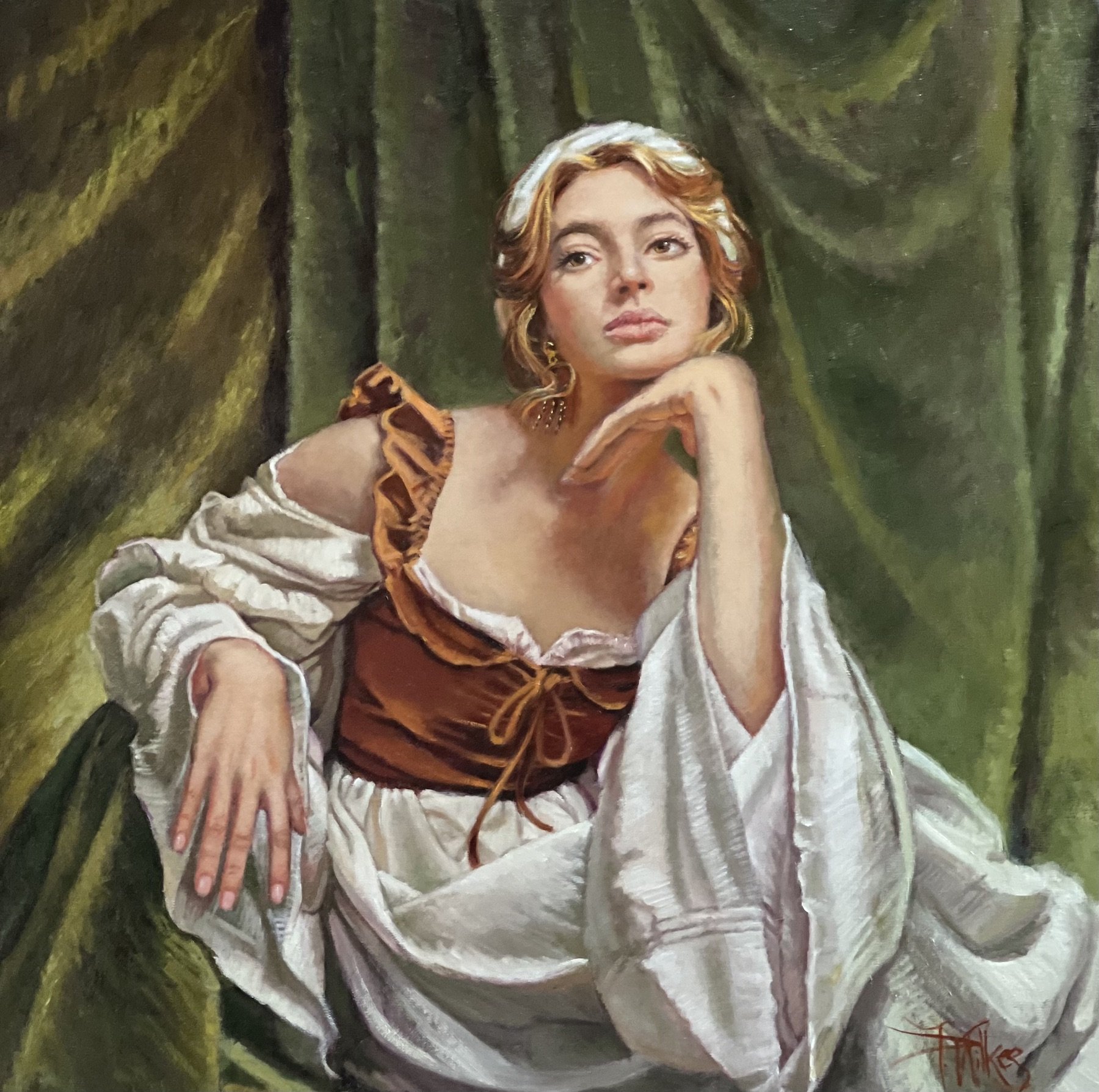

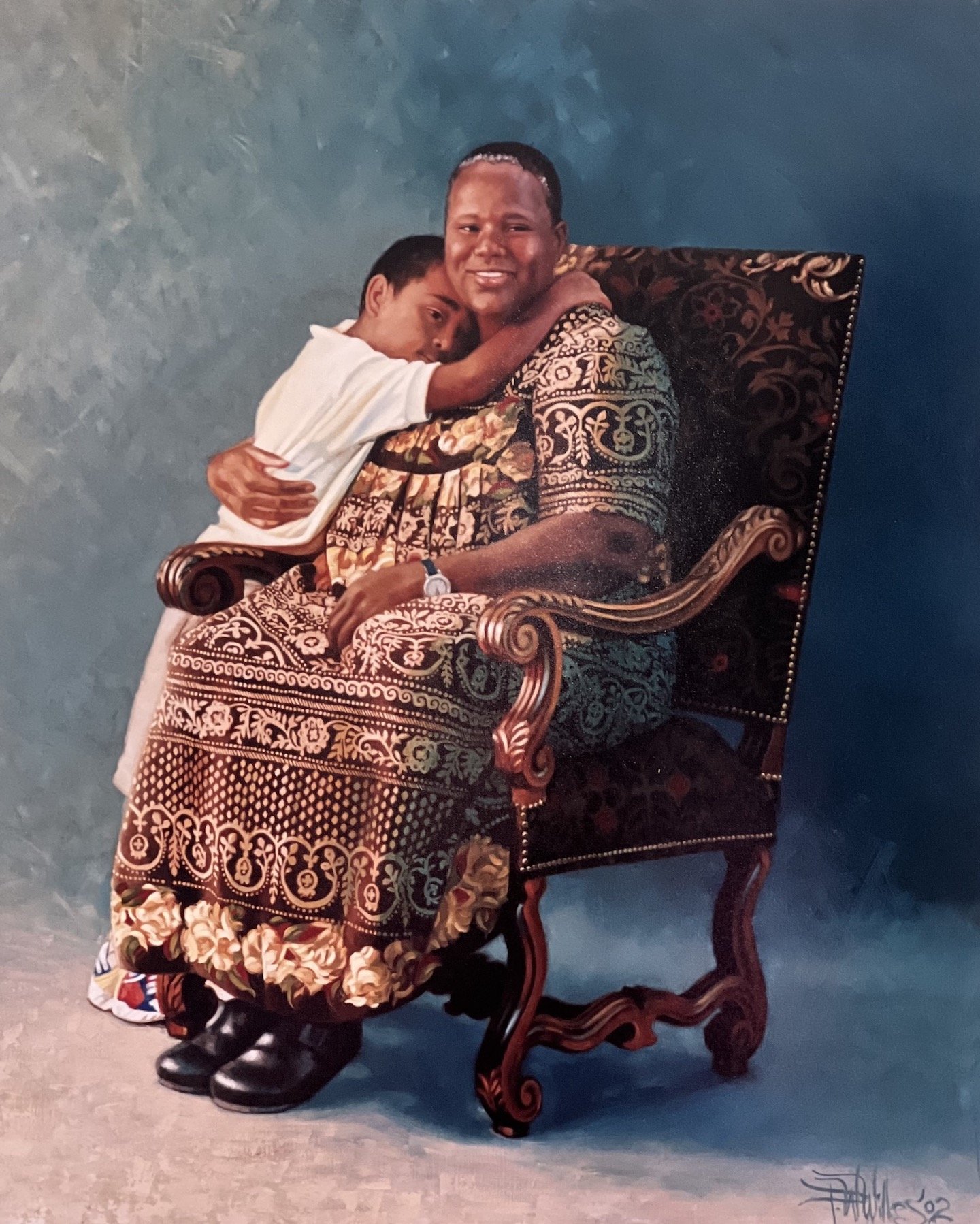
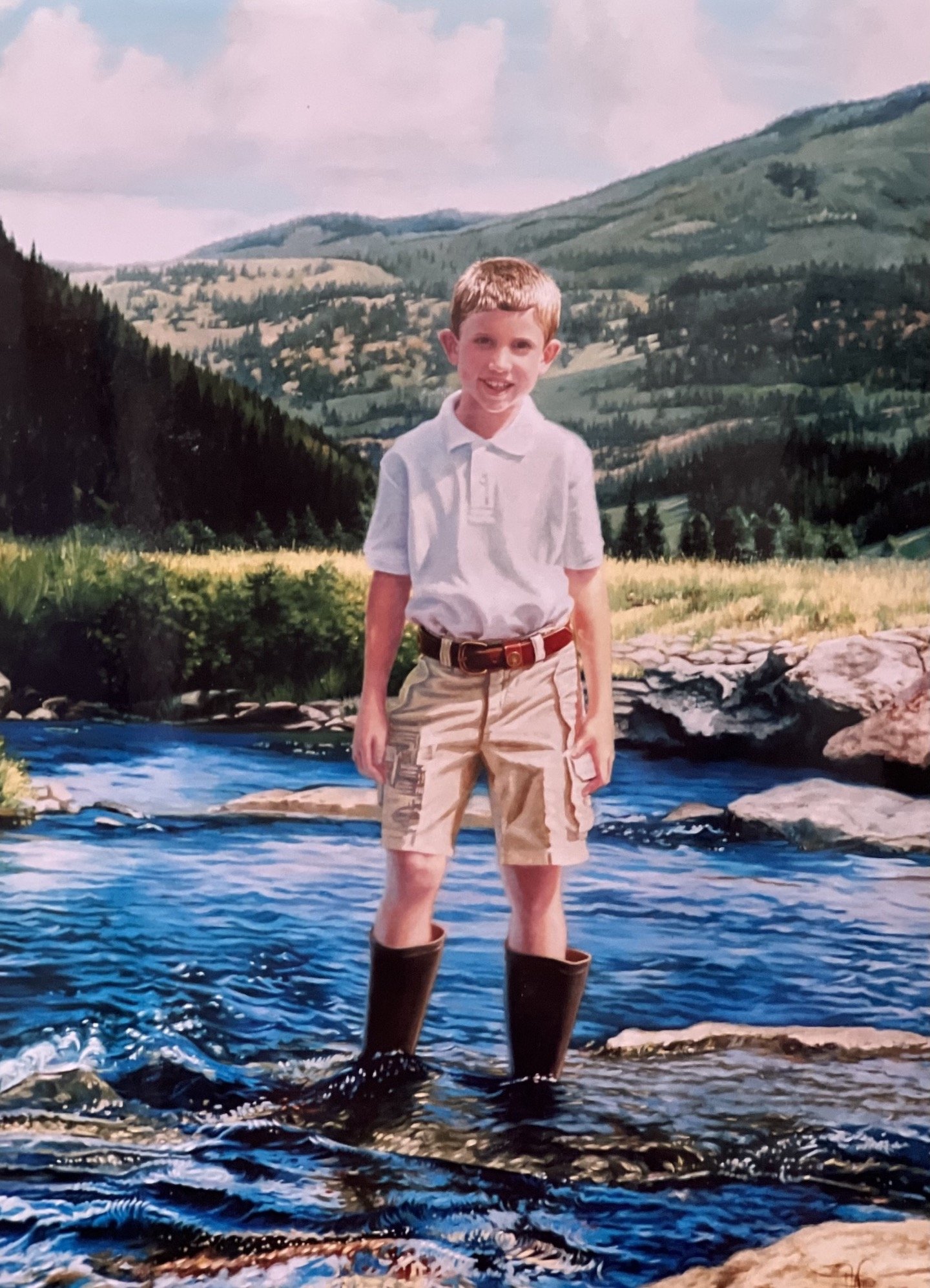
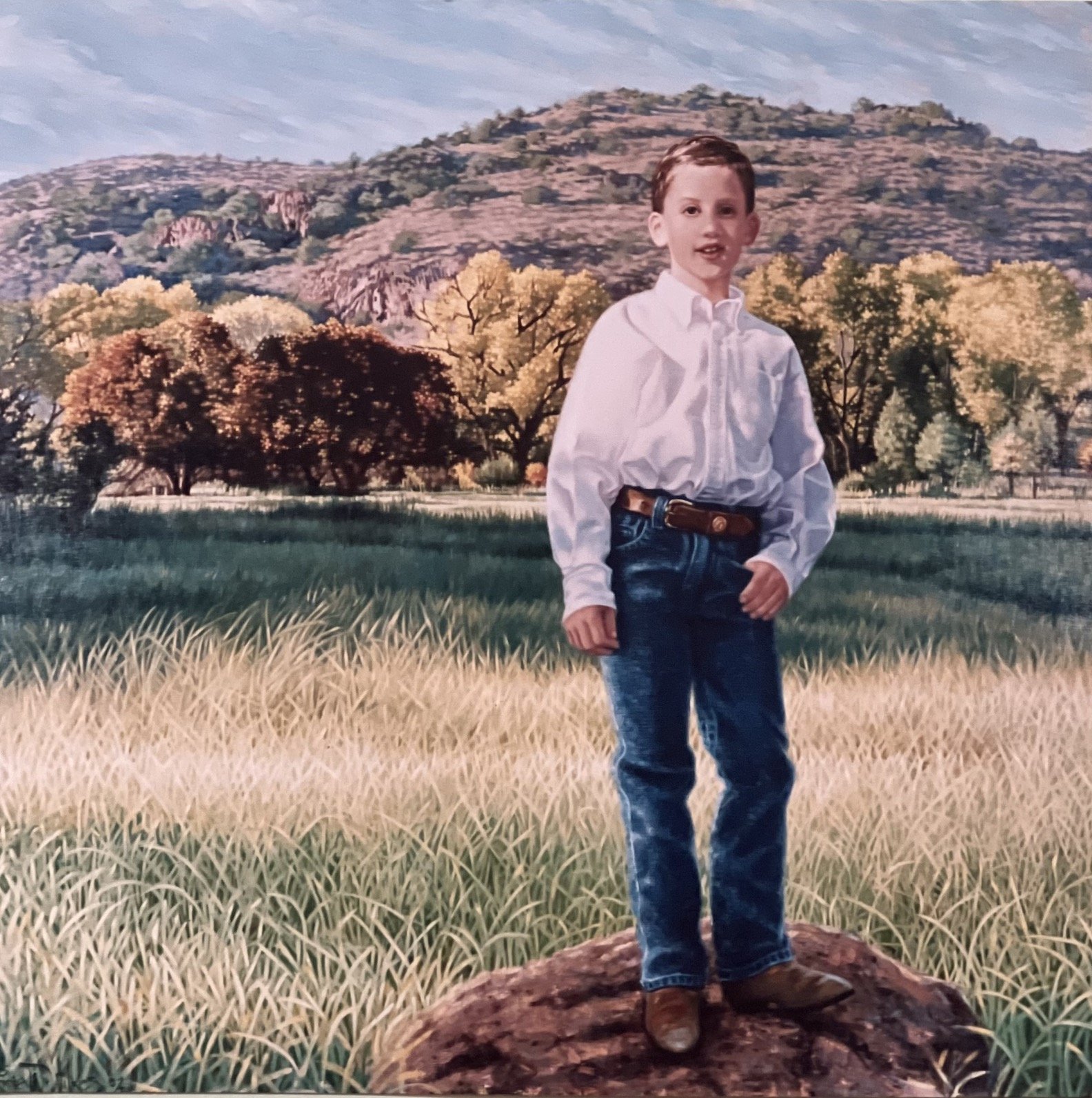
AAS: Patricia, are you originally from Arkansas?
PW: I grew up in Little Rock in the 50’s and 60’s. As a kid, I was always able to entertain myself with crayons, pencil and paper, or clay. Once when I was sick in bed as a child, my mother brought me a can of Play Doh, and I created a tiny farm complete with fences, animals, and a barn. My mother saved it, and I still have it to this day. My first Art teacher was Mrs. Story up the street. Later, my mother took me to Art classes in a building that became the Arkansas Arts Center.
I took Art as a senior in High School, but my formal Art education began in college. When it became time to apply to colleges, I was allowed to apply to Art school. I wanted a fine arts program within a university, and after some searching, I applied to Washington University School of Fine Arts, now known as the Sam Fox School of Design & Visual Arts in St. Louis. I wanted a curriculum heavily loaded with studio courses and light on the academic stuff, and that school fits those requirements. Also, it was the perfect distance away from home, about a day’s drive.
AAS: Tell me more about your art education. How do you think it impacted your art practice today?
PW: The education was a rigorous learning experience. Each student was required to take 18 hours per semester, and we had mandatory Art History requirements that we needed to graduate. The university offered classes in drawing, figure drawing, painting, photography, pottery, sculpture, fashion design, printmaking, and I think woodworking. We were encouraged to be adventurous in our choices in the hope of finding our artistic path. It was grueling, but I loved it. A lot of people in my freshman class couldn’t take the pressure and dropped out. Not exactly a party school, but it was what I wanted.
In my sophomore year I had the privilege of taking Barry Schactman’s Figure Structure class. An extraordinary teacher, Mr. Schactman knew all the bone’s names and all the bony processes, all the muscles and how they wrapped around the body and attached to other bones, and we learned how to draw that, making a believable form in space.
I have always been thankful that my school had a strict Art History requirement to graduate. A knowledge of Art History has helped me countless times in my own work; whenever I’ve had a painting question or problem, I’ve been able to solve it through my knowledge of Art History. As an artist, I would feel handicapped if I didn’t have the images in my head of what I learned. It guides me in everything I attempt to do.
In our junior year, we declared our majors. I chose Graphic Communications with an interest in Illustration because I wanted to be able to earn a living while sharpening my skill. This happened during the last days of the Golden Age of Illustration. Magazines and newspapers were full of beautiful artwork. One time the famous Bernie Fuchs visited our class and gave a presentation, and I wanted to follow in his footsteps. I graduated with a BFA and had plans to move to Chicago and start working as an illustrator.
AAS: How did you end up back in Little Rock?
PW: After graduation, when I was making a quick trip down to Little Rock, I went with my brother to a Traveler’s baseball game and met my future husband. We were married a year later, and I began my career as a freelance illustrator for advertising agencies in Little Rock. My husband was a junior in Medical School at the time, so my salary put food on the table for the next two years. I continued freelancing for the next six or seven years until David obtained a Fellowship in Ophthalmic Plastic Surgery in Tucson, Arizona. While there, I enrolled in Master drawing and painting classes at the University of Arizona, accumulating credits toward a MFA degree. Those classes served as a good path to return to Fine Arts and get the Illustrator out of my system. We moved back to Little Rock in 1982 and I took a break from working to start our family.
AAS: To me, your training and experience as an illustrator comes through in Women of Wonder. It is wonderful piece and must have been fun to do. Are the “characters” people you knew?
Women of Wonder, 58” x 60”, pastel on sanded paper
PW: Haha no, I only knew the tall lady in the center, my daughter Jenny. She is a serious runner and marathoner, and she invited me to accompany her to the Wonder Woman race that was held in Little Rock several years ago. Jenny ordered a custom made to measure Wonder Woman costume, and she won the race while wearing it. There was a reception at the Convention Center after the race, and all these precious little girls in their own Wonder Woman costumes were coming up to Jenny, wanting their pictures taken with “the Real Wonder Woman”. It was wonderful, uplifting and empowering for every woman there, young and old. I took lots of pictures, and I put my best examples in this huge pastel painting. I haven’t framed it yet; it is stapled to a wall in my studio and covered with glassine. I love each of the women in this piece, but I have to say that my favorite is the curly haired little girl standing in front of my daughter, the powerful way that she is standing, and the determined expression on her sweet little face.
AAS: How do you describe your style of painting?
PW: In all my work, I strive to use every trick and technique that I know through composition, drawing, color, anything I can think of to create the illusion of a deep, believable space with three dimensional form. It’s what I learned many years ago, but that knowledge has never abandoned me. It’s Classical Realism in the tradition of the Masters, but with a Contemporary edge or sensibility that is intended to grab the viewer and invite contemplation.
AAS: Strong feminine women are often the subject of your paintings. Tell me about Strength.
Strength, 36” x 36”, oil on linen
PW: I’ve been a serious gardener for a long time, shoveling dirt, planting azaleas and trees, laying sod, planting and dividing hostas, everything. But I love it. I’ve found it to be a very gratifying, three-dimensional way to create a beautiful space using line, textures, color, etc. But it can be very physical, hard work. So Strength could be seen as a sort of self-portrait using my daughter Jenny again as a model. She is one of the strongest, toughest people that I know. She can endure extreme conditions and also retain her femininity and beauty and can serve as a representative of women who choose to be multidimensional individuals. Her hair hides her face, so she could be any one of us.
While composing this painting, I remembered a lesson from an art history class on the illustrated manuscripts like The Book of Kells. Those illustrations were drawn with intertwined, coiled designs seeking to expand, while the borders of the pages held them in, creating a tension. In this painting the lady, holding a full shovel, is trying to rise, but the square format holds her in, creating the same kind of tension.
AAS: Mother’s Day was, I think, the first painting I saw of yours. It is another terrific painting. Like in Strength, I love the way you juxtapose masculine and feminine imagery.
Mother’s Day, 36” x 26”, oil on linen
PW: Mother’s Day is Strength after a little evolution. Ten years have passed since completing the first painting, and things have become more complex. I used the same lady, and again she is holding a gardening tool. Here, her face is visible, but sunglasses shield her eyes. She is confrontational. holding the tool in front of her like a weapon. Her right hand and arm depict the physical strength that she exhibits. But she has a slight smile on her face, and she is holding my Mother’s Day present from last year. So, the painting raises questions that are open to the viewer’s interpretation.
AAS: You do a lot of portraits. What is it about portraiture that excites you?
PW: When my children were in grade school, I decided that it was time to resume my artistic career. I began taking portrait painting classes at the Arkansas Arts Center, first from Betty Dortch Russell, and later from Ovita Goolsby. Both of these women were wonderful teachers, and they provided me with knowledge necessary for portrait painting.
I was able to grow again as an artist when I started painting my kids. They were accessible models, and I was able to look at them and remember what I had learned in school about the human body, for example, the way certain muscles wrapped around an arm and the correct way to draw it. I could treat any part of the figure in this way. My use of my children as models didn’t stop with their childhood.
I enjoy painting portraits because they served as continuing education for me. I take what I learned in school and develop further artistically. I love to look at the planes of the face and figure and depict them realistically on canvas or paper. For me, it is so much fun to paint the differences in texture of the skin, the hair, the fabric of the clothing, etc. And I have such a feeling of accomplishment when I’m finished, because I know that the likeness is there, but I’ve also been able to convey a sense of the subject’s personality and spirit.
AAS: I especially like what you’ve done in The Spinach Vendor. The contrasting strokes of pastel in the clothing is just wonderful – the whole composition.
The Spinach Vendor, 28” x 22”, pastel on sanded board
PW: THANK you! I love to return to pastel painting, especially after finishing a tight oil. There is something about using that stick of pure color that is very liberating to me; I stand in front of my easel and use large arm movements from the shoulder and instinctively draw with color .I like the vigorous result, fresh and not overworked.
I shot the reference photo for this painting during a trip to Israel several years ago. Our group was walking through Jerusalem’s Old Town, and I saw this lady seated at a crossroad of several streets, calmly working at her job amid the chaos. Her presence and dignity really spoke to me, so I wanted to capture her image. I shot a quick photo and completed the pastel a few weeks after our return.
AAS: Do you get many requests for commissions?
PW: I’m a partner at the Art Group Gallery and I show my work there, but I don’t seek commission work. In my younger days, I spent over ten years working on children’s portraits. The work was fulfilling and my clients were all great-they trusted me to create a beautiful portrait of their children because they knew that I was using the same care that I would use while painting my own kids. I was pleasing them, but also pleasing myself. However, I have one very special client who commissioned me to paint portraits of her children when they were young, in both pastel and oil, and now I am painting portraits of her four grandchildren when they are three years old. But that is a joy.
I spent many years in my career solving problems that other people presented to me, but now I’m more interested in pleasing myself and working on projects that come from within.
AAS: Do you have a preference, oil versus pastel, or is the choice based on the subject and what you want to accomplish with the painting?
PW: I like to use pastel when I want to finish a painting quickly. Pastel requires no drying time and can give a more immediate feeling. In my oil painting, I work in layers to eventually build up a hard surface of paint, so that takes time. I can achieve a feeling of depth with the layers of oil, and pastel has more of a surface quality. Whatever medium I use, my process is the same. I start with the drawing and composition on a toned surface. I lay in the darks to provide structure to the piece, then work my way toward lighter tones, ending with the highlights.
Sometimes I like to work in a large format. I have rolls of sanded pastel paper and rolls of oil primed linen that I’ll use in large works. I work on the flat pastel paper and also on a flat unstretched linen, because I can’t stand working with the bounce of a stretched canvas. After I complete each painting, I stretch it on custom made stretchers that my husband builds in his shop. That way I am not confined to standard sizes available in stores and can make the finished painting any size I want.
I’m so old school. I stretch each canvas on the 1.5-inch-deep canvas stretchers and enjoy each part of the process. I use linen instead of cotton canvas, because linen is the most durable fabric to put paint on and due to its strengths ideal for large paintings. Its warp and weft threads are equal in weight so less susceptible to the expanding or contracting problems created by moisture. Plus, it is a pleasure to paint on. I still use cotton canvas for workshops and practice, though.
AAS: You certainly paint more than just portraits. The Little Free Library is a delightful painting and I still recognize your distinctive use of color and texture.
The Little Free Library, 34” x 32”, oil on linen
PW: Thank you! That is a painting that I finished this spring. I’ve loved the work of George Inness for years, and this painting was my chance to channel George Inness and do a tonalist piece. I began the painting by starting in the distance and painting the darkness of the trees and slowly moving closer with the medium tones of the grassy areas and shadows. The one-point perspective reminded me of the classical paintings that I had studied in school with the one point perspective Roman temples and the classical figures in togas. I painted the chairs and bookcase last using thicker impasto and sharper edges, trying to infuse them with personality, so I could possibly call the painting “figure in landscape” The bricks in the building really are that 50’s orange color, but i like how it plays against all the greens. It was a fun project for me and risky, but I’m happy with the way it turned out.
AAS: Patricia, what can we expect next from you?
PW: I’m trying to finish a large figurative oil that I hope to include in the Art Group’s show partnering with “At Home Magazine” September 9. While I’m trying to meet that deadline, I’m having a good time mentally, thinking and dreaming about the third painting in the series of Jenny with a garden tool.
Thank you, Phil, for asking me to participate in The Arkansas Art Scene Blog. It’s been really therapeutic to look back at my life. I’ve become proud of my work ethic and artistic growth.
